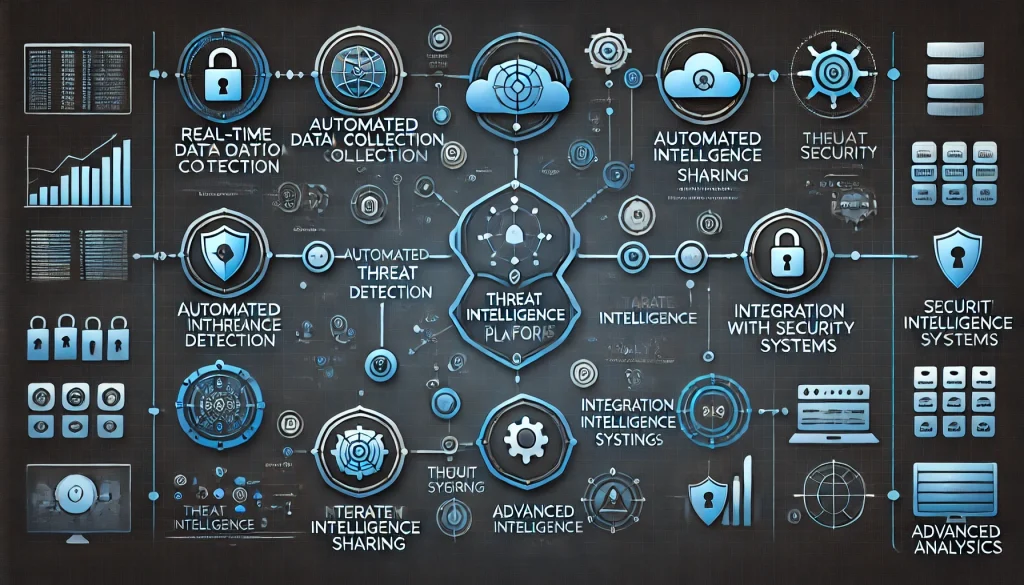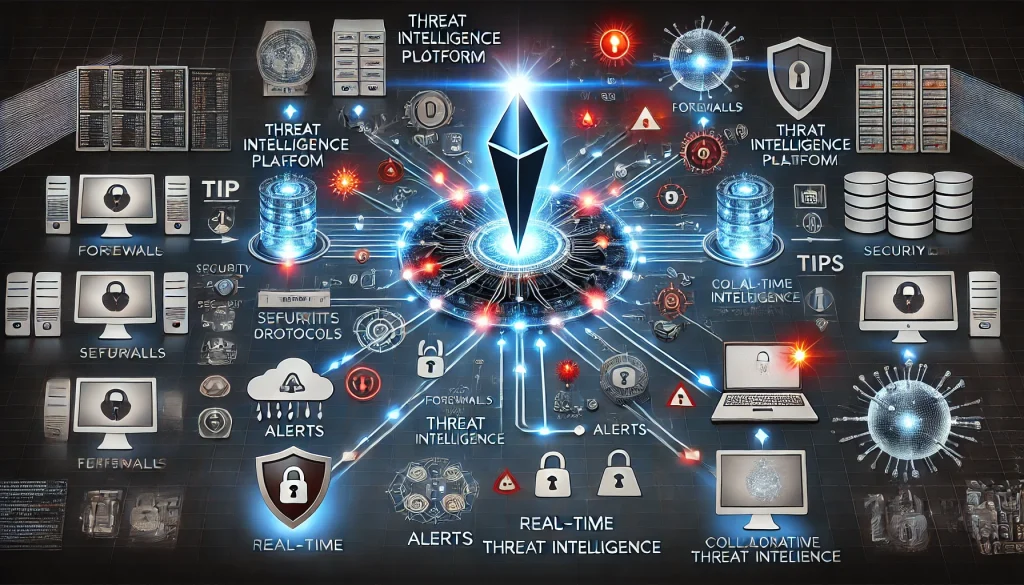
Threat intelligence platforms (TIPs) have become essential in modern cybersecurity strategies. These platforms collect, analyze, and share threat data to help organizations identify and respond to cyber threats more effectively. As cyberattacks grow in complexity and frequency, organizations need TIPs to stay ahead of potential threats. In this post, we’ll explore how TIPs enhance cyber resilience, review key platforms, and discuss their benefits and challenges. This will help organizations understand why TIPs are crucial for a robust cybersecurity framework.
Overview of Threat Intelligence Platforms (TIPs)
Threat Intelligence Platforms (TIPs) are specialized tools that gather, analyze, and share threat data from multiple sources. They help security teams identify emerging threats and respond proactively. TIPs collect data from sources like open-source intelligence (OSINT), commercial feeds, and internal logs. They then analyze this data to uncover patterns, trends, and potential threats. Key functionalities of TIPs include:
- Data Aggregation: Collecting threat data from diverse sources.
- Data Analysis: Identifying trends and patterns in threat data.
- Automation and Integration: Automating threat responses and integrating with security tools like SIEMs and firewalls.
These capabilities enable TIPs to provide actionable intelligence, making them a vital part of any cybersecurity strategy.
How Threat Intelligence Platforms Work
TIPs follow a structured process to deliver actionable threat intelligence:
- Data Collection: TIPs gather data from OSINT, commercial threat feeds, dark web sources, and internal security logs.
- Data Normalization: The platform converts the collected data into a standardized format to ensure consistency.
- Threat Analysis and Correlation: Advanced analytics and machine learning identify potential threats by correlating data and spotting suspicious patterns.
- Threat Prioritization: TIPs rank threats based on severity, relevance, and potential impact on the organization.
- Automated Responses and Alerts: TIPs generate alerts and automate responses to mitigate threats quickly.
- Information Sharing: They share threat intelligence with other organizations and communities, promoting collective defense.
This process helps organizations detect, understand, and respond to threats more efficiently.
Key Features and Capabilities of Threat Intelligence Platforms

| Platform | Data Sources | Key Features | Integration Capabilities |
|---|---|---|---|
| ThreatConnect | OSINT, commercial, internal | Playbooks, incident management, community sharing | SIEMs, firewalls, EDR, SOAR |
| Recorded Future | OSINT, dark web, closed sources | Real-time alerts, risk scoring, predictive threat intelligence | SIEMs, TIPs, GRC tools |
| Anomali | OSINT, dark web, commercial feeds | Threat hunting, automated workflows, machine learning | SIEMs, EDRs, SOAR, threat feeds |
ThreatConnect integrates with various security tools and offers customizable playbooks for automated responses. It’s known for its community sharing capabilities, helping organizations collaborate against threats.
Recorded Future provides real-time threat intelligence and risk scoring. It excels in predictive analytics, helping organizations anticipate threats before they materialize. It integrates well with SIEMs and governance tools.
Anomali focuses on threat hunting and automation. It uses machine learning to enhance threat detection and integrates seamlessly with various security tools like SIEMs and SOAR platforms.
Benefits of Using Threat Intelligence Platforms
- Proactive Threat Detection: Identify potential threats before they can exploit vulnerabilities.
- Enhanced Incident Response: Speed up response times with contextual threat data.
- Automated Defense Mechanisms: Automate responses to known threats, reducing the need for manual intervention.
- Improved Collaboration: Share threat intelligence with other organizations to strengthen collective security.
- Reduced Alert Fatigue: Prioritize threats and reduce false positives, allowing security teams to focus on genuine threats.
These benefits make TIPs indispensable for organizations aiming to bolster their cybersecurity defenses.
Challenges and Limitations of Threat Intelligence Platforms
Data Overload and Noise
TIPs collect vast amounts of data, which can overwhelm security teams. Without proper filtering and prioritization, this can lead to analysis paralysis and missed threats.
Integration Complexity
Integrating TIPs with existing security infrastructure can be challenging. Organizations with diverse IT environments may struggle to ensure seamless interoperability, impacting the effectiveness of threat intelligence.
Cost and Resource Requirements
TIPs can be expensive to implement and require skilled personnel to manage them effectively. Smaller organizations may find it difficult to allocate the necessary resources for optimal use.
Real-World Applications and Case Studies

Financial Sector
A large bank used ThreatConnect to automate threat responses, reducing incident response times by 40%. This allowed their security team to focus on more strategic tasks.
Healthcare Industry
A hospital integrated Recorded Future with its SIEM to prevent ransomware attacks, leading to a 30% decrease in security incidents and improved patient data security.
Manufacturing
A global manufacturer deployed Anomali to enhance threat visibility across multiple locations. This improved their overall security awareness and response capabilities.
These case studies demonstrate how TIPs can significantly improve cybersecurity across various industries.
Future Trends in Threat Intelligence Platforms
The future of TIPs lies in advanced artificial intelligence and machine learning for predictive analytics. More platforms are focusing on industry-specific intelligence to address unique threats. Additionally, the growth of threat-sharing communities will further enhance collective defense efforts. As cyber threats evolve, TIPs will become more sophisticated, offering deeper insights and faster responses.
Conclusion
Threat Intelligence Platforms play a critical role in modern cybersecurity strategies. They help organizations detect, analyze, and respond to threats more effectively, enhancing overall resilience. Despite challenges like data overload and high costs, their benefits in proactive threat detection and automated defense are invaluable. Organizations should consider implementing TIPs to stay ahead of evolving cyber threats and build a robust cybersecurity framework.
FAQ
What do Threat Intelligence Platforms (TIPs) do?
TIPs collect, analyze, and share threat data to help organizations detect and respond to cyber threats more effectively.
How do TIPs improve cybersecurity?
They provide real-time threat alerts, automate responses, and prioritize threats, enabling faster and more effective incident response.
What are the challenges of using TIPs?
Challenges include data overload, integration complexity, and the need for skilled personnel to manage and analyze threat data effectively.
Resources
- IBM. Threat Intelligence Overview
- Cybersecurity Intelligence. Combating Cyber Attacks with Threat Intelligence
- Forbes. Preventing Data Breaches: The Role of Threat Intelligence Platforms
- ScienceDirect. Threat Intelligence and Cybersecurity
- Tandfonline. The Evolution of Threat Intelligence Platforms
